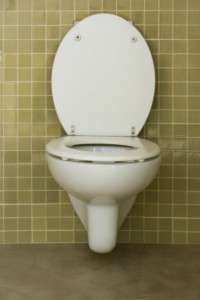Learn troubleshooting tips that will help keep your low flow toilets working their best.
 In 1994, federal law restricted all new toilets to 1.6 gallons per flush. This was a big change from the 3.5 gallon tanks people were accustomed to. Unfortunately, early generation low flow toilets didn’t actually work that well. It often took two flushes to get the job done, which pretty much negated the water savings officials had been trying to accomplish. Even now that low flow toilet technology has improved dramatically, many property owners still cling to their old models based on that initial poor performance record. If you have one of the new generation of low flow toilets (made in 1998 or later), you shouldn’t experience any flushing problems due to flaws in the design and technology itself. But if you do, you can use these troubleshooting tips to help you figure out what’s wrong.
In 1994, federal law restricted all new toilets to 1.6 gallons per flush. This was a big change from the 3.5 gallon tanks people were accustomed to. Unfortunately, early generation low flow toilets didn’t actually work that well. It often took two flushes to get the job done, which pretty much negated the water savings officials had been trying to accomplish. Even now that low flow toilet technology has improved dramatically, many property owners still cling to their old models based on that initial poor performance record. If you have one of the new generation of low flow toilets (made in 1998 or later), you shouldn’t experience any flushing problems due to flaws in the design and technology itself. But if you do, you can use these troubleshooting tips to help you figure out what’s wrong.
Check Inside the Tank
Low flow toilets are able to use less water to power a flush because their interior design channels this water more efficiently, generating sufficient pressure to empty the toilet bowl without the help of a large weight of water. However, you do need every drop of water to get used in every flush. If your low flow toilet isn’t flushing right, look inside the tank. Make sure the flapper chain has sufficient tension and is lifting fully when you flush to allow all the water to drain from the tank. As the tank refills, check that it fills all the way up to the top about 1 inch below the edge of the tank. If the fill valve shuts off too early, adjust the float so you get more water.
Check for Pipe Blockages
Another possible reason your low flow toilet isn’t flushing right is a blockage in the pipe. This may be in the toilet itself or further down in the pipe. Try using a plunger or a plumbing snake to dislodge any clogs in the toilet or the immediate vicinity.
Check for Vent Blockages
If flushes are sluggish and using a plunger or snake didn’t help, you might have a blockage in the vent attached to the waste line. Go outside and check the vent cover for any leaves or debris that might be blocking it. If you suspect debris has fallen down into the vent stack, you can run a garden hose down it in an attempt to flush the debris out.
Check Your Plumbing Slope
If you still can’t figure out what’s wrong with your low flow toilet, you need to call a plumber to check the slope of your drain pipes. While older toilets had enough water to power through pipes with less than ideal slope, a low flow toilet doesn’t. If the pipe is too steep or not steep enough, you may find that waste or water is accumulating in the pipe, resulting in flush problems. A professional plumber can check your pipes and determine if your problem can be solved by installing a pressure-assisted low flow toilet with a stronger flush, or if you need to have your pipe slope adjusted.








